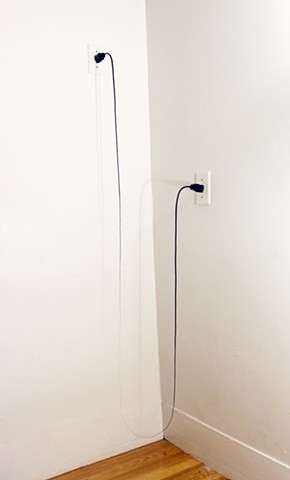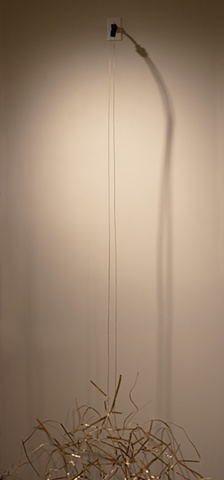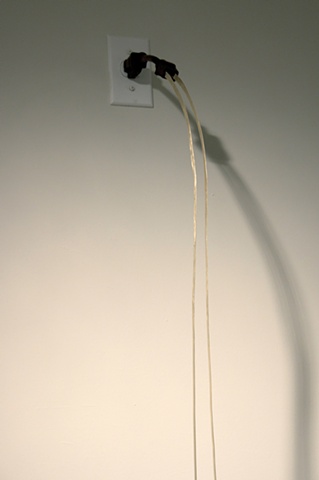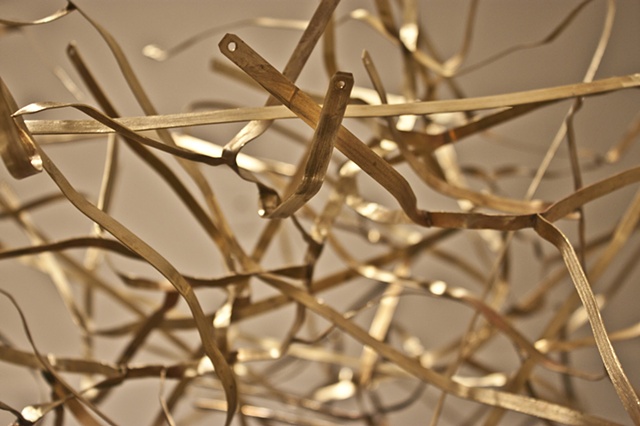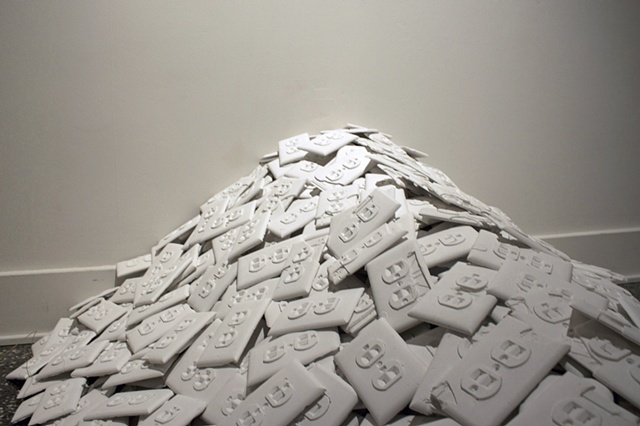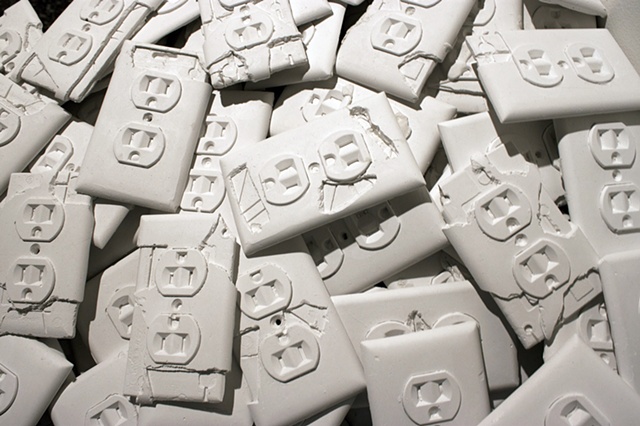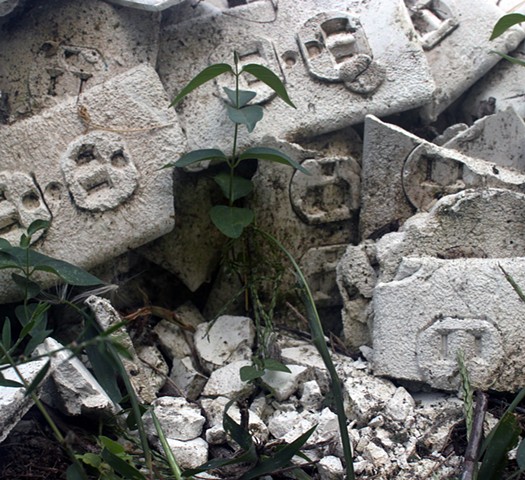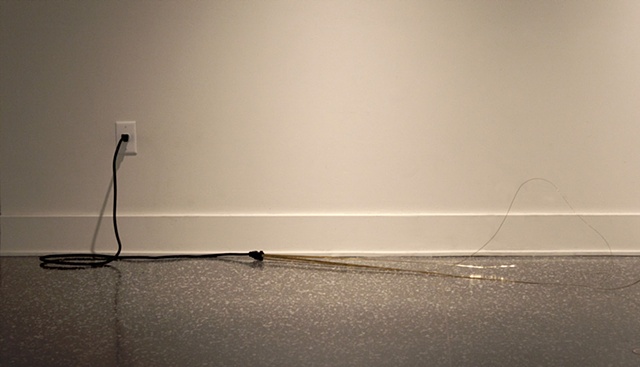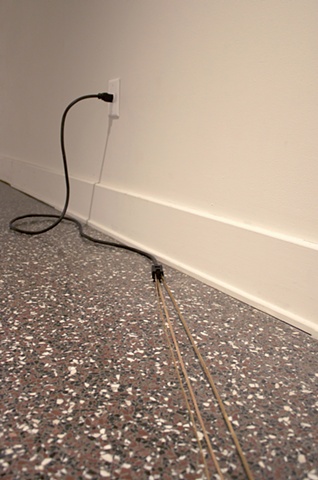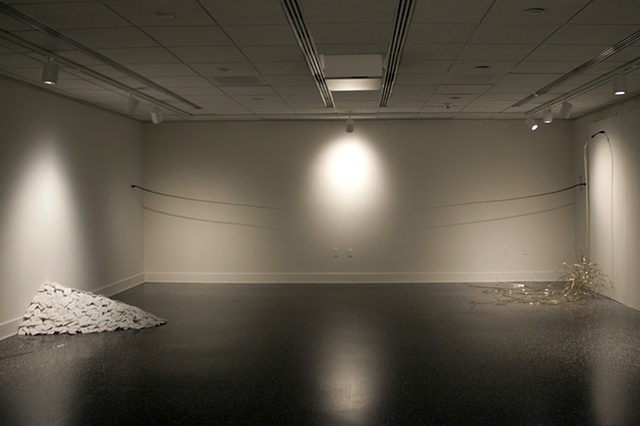Potential Difference
Potential Difference examines the instability of the white walls of the gallery, focusing on the electrical outlet as a site of potential as well as a point of connection between the space and the body. The outlet is a site where the latent imaginative as well as electrical potential contained within the walls of a space can be realized. As a fixture and a form, the electrical outlet flirts with abjection; like an orifice or a wound presents a point of entry into the interior of a corporeal body, so the outlet presents a point of entry into the unseen depths of the architectural body.
The work in this series forges a physical and conceptual connection to the gallery space; it recognizes and depends on the boundaries of the gallery, caught in a self-effacement similar to the gallery space itself. Work and space are linked together, each questioning the meaning of the other. While the white walls of the museum typically bow to the artwork, in Potential Difference the work bows to the space, self-consciously assessing its relationship to and reliance on the walls, ceiling and floor that surround it.
